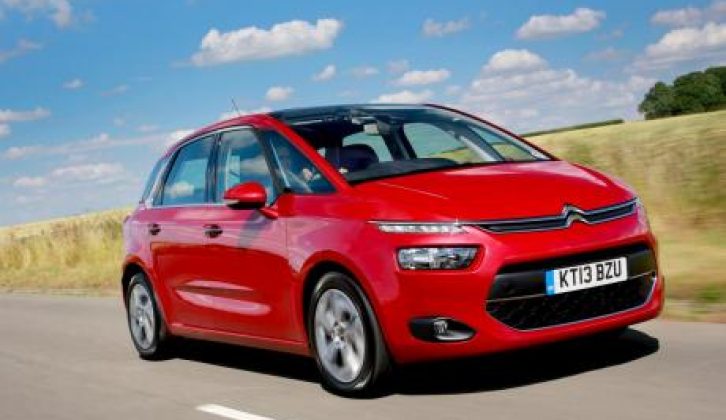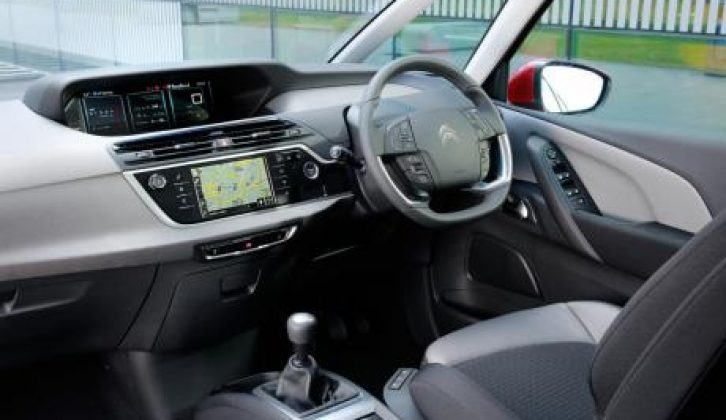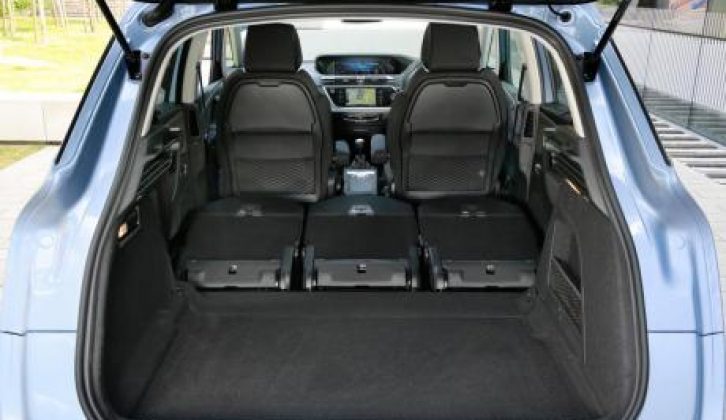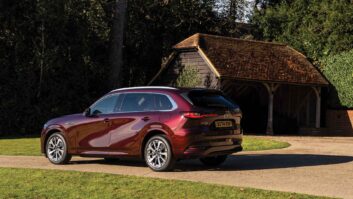[tl:gallery size=460×272]
The new C4 Picasso five-seat MPV is Citroën’s latest people
carrier, and if my brief drive is anything to go by it will add to that 400,000
total considerably. It’s better to drive, more practical and safer than its
predecessor.
The striking looks are the first thing you notice about the
C4 Picasso. The slim running lights and low headlights give the Citroën an
unusual face from the front, as if it’s squinting into the sun. From the side,
you notice the huge glass area, which promises to give everyone inside a good
view out. For an MPV, though, the Picasso isn’t especially tall. In fact, it’s
4cm lower and 4cm shorter than the old car, and the wheel-at-each-corner stance
helps make the Picasso appear smaller than it really is.
On the inside
There’s nothing small about the cabin, though. Despite the
reduced length overall, Citroën has squeezed in an extra 6cm between the front
and rear wheels. That means there’s plenty of space whether you are in the
first or second row. I’m 6′ 3″, and didn’t need the front seat all the way
back on its runners to find a comfortable driving position. Those in the back get more legroom than before, and three
individual seats which can slide back and forth or runners to juggle passenger
space and luggage room.
Not that there will be any need to extend the boot often. Even with the seats all the way back there’s 537 litres of space. Move
all three forward and that increases to 630 litres. Tip the seats down, which
leaves a near-flat load floor, and there’s 1851 litres. That’s more luggage
space than in most estate cars, and easily beats the Citroën’s key rival, the
Ford C-Max.
The details have been cleverly thought out, too. There’s
more storage space under rear-seat passengers’ feet, perfect for storing kids’ toys, and lots more
room for odds and ends in the front of the cabin.
The interior design is every bit as bold as the exterior,
although that’s not necessarily a good thing. Rather than conventional
instruments and controls, the C4 Picasso has two screens, mounted in the centre
of the car instead of directly in front of the driver. The larger of the two
shows the speedometer and rev counter, while the second is a touchscreen which
controls the air conditioning, Bluetooth connectivity, stereo and so on.
Citroën argues that this gives the dashboard a clean and uncluttered look.
However, it makes simple tasks like adjusting the air-con temperature more
complicated, as you first need to select the right menu then press the screen.
[tl:gallery size=460×324]
On the road
The old C4 Picasso placed rode comfortably around town but
wasn’t especially poised at speed. The new Picasso strike a better balance
between comfort and control. All but the sharpest of bumps are smoothed away,
and the C4 feels secure and stable on country roads and motorways. That bodes well for safe and
stress-free towing.
Like most new cars, the C4 Picasso is considerably lighter
than the outgoing model, with 140kg trimmed from the kerbweight. The model
best-suited to towing (at least until the 2.0-litre diesel starts production in November) is the e-HDi 115 manual. This has a kerbweight of just 1298kg
giving an 85% match figure of 1103kg. That could be an issue for anyone who
wants to abide by the 85% guideline, although it’s less of an issue for an
experienced driver who is happy to tow a caravan weighing closer to 100% of the
kerbweight. The legal towing limit is 1600kg for both manual and automatic
versions.
The 115 diesel engine should be strong enough for
caravanning ̶ just
about. The peak torque figure of 199lb ft isn’t especially high, but we found
the engine willing, responsive and refined. It ought to cope with a lightweight
tourer provided the driver isn’t in too much of a hurry.
Fuel economy should be excellent if the official figures are
anything to go by. Both the manual and ETG6 automatic achieve 70.6mpg on the
combined cycle. However, it’s worth noting that the trip computer on my manual test
car showed just under 40mpg on a drive with a lot of
accelerating and braking. In freer flowing traffic the e-HDi ETG6 trip computer
showed an average of 47.8mpg, although the gearbox didn’t always change gear smoothly.
There’s a less powerful diesel with 170lb ft of torque, and
although I didn’t find the modest output a problem with just the driver
on-board regular caravanners will be better off with the more powerful version.
Citroën also offers a pair of petrol engines, the VTi 120
and the THP 155, but 90% of buyers are expected to choose one of the diesels.
[tl:gallery size=460×271]
Safety, equipment and price
Crash test experts, Euro NCAP, wasted no time in testing the
C4 Picasso, and awarded the car a five-star overall rating. The score of 88%
for child occupant protection is especially impressive.
Entry-level VTR cars come with stability control, and
driver, passenger, side and curtain airbags for both rows. Dual-zone air
conditioning, 16-inch alloy wheels, cruise control and a six-speaker stereo are
standard.
Additional specification on the VTR+ includes front fog
lamps, a digital radio, rear parking sensors and air vents for rear-seat
passengers.
Step up to Exclusive for larger alloys, a reversing camera
and satellite navigation. Exclusive+ adds lots more spec, including radar-guided
cruise control, a panoramic sunroof, part-leather upholstery, front parking
sensors and 18-inch alloys.
Prices start from £17,500. The e-HDi 115 VTR+, priced at
£20,255, looks like a sensible compromise between price, performance and equipment.
Whichever model is chosen, though, the C4 Picasso is now one
of the best small MPVs on sale.













